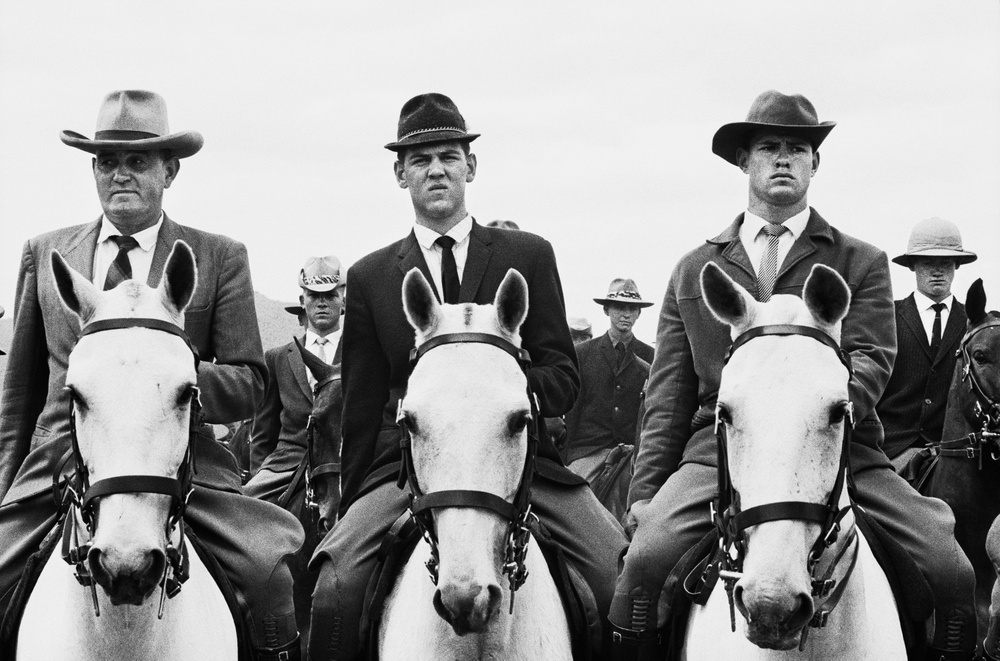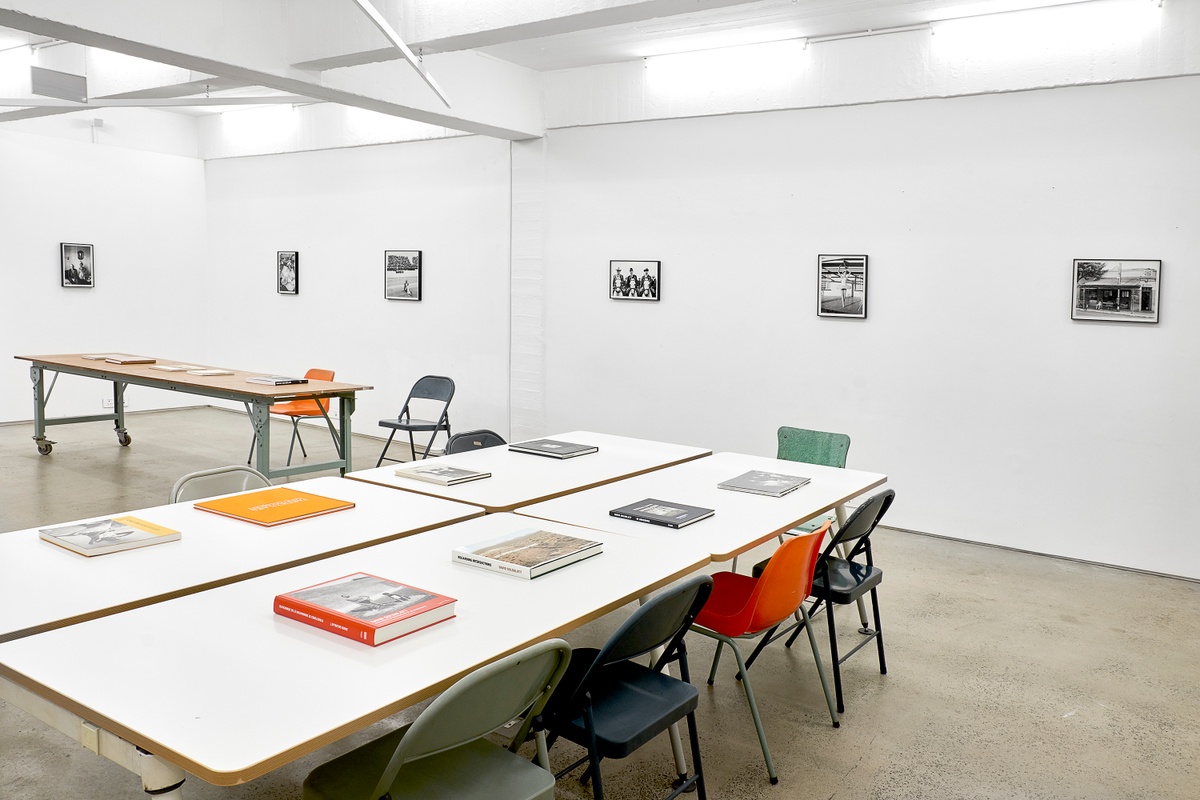David Goldblatt

The unnamed man in the centre of Goldblatt’s The commando of National Party stalwarts would prove a more compelling figure in South African politics than his hard demeanour first suggests. Then a mounted policeman, Leon Wessels later became a politician and served under the right-wing, white-minority Nationalist Party. Following the dissolution of apartheid, however, he was one of the few NP members to show public contrition for acts of violence perpetrated by the government. “I do not believe,” he told the South African Truth and Reconciliation Commission, “that the political defence of ‘I did not know’ is available to me because, in many respects, I believe I did not want to know.”
Goldblatt would again photograph Wessels in 1996. In this second image, Wessels is seated alongside Nelson Mandela in a group portrait commissioned by the new South African democratic government. The photograph celebrates the signing of the constitution, the drafting of which both Wessels and Cyril Ramaphosa – who later became president in 2018 – oversaw.
This photograph appears in Some Afrikaners Photographed, 1975; Fifty-one Years, 2001; Some Afrikaners Revisited, 2007; Kith Kin & Khaya, 2011; and Structures of Dominion and Democracy, 2018.
b.1930, Randfontein; d.2018, Johannesburg
“I was drawn,” the late photographer David Goldblatt wrote, “not to the events of the time but to the quiet and commonplace where nothing ‘happened’ and yet all was contained and immanent.” A preeminent chronicler of South African life under apartheid and after, Goldblatt bore witness to how this life is written on the land, in its structures or their absence. Unconcerned with documenting significant historic moments, his photographs stand outside the events of the time and yet are eloquent of them. Through Goldblatt’s lens, the prosaic reveals a telling poignancy. Even in those images that appear benign, much is latent in them – histories and politics, desires and dread. His photographs are quietly critical reflections on the values and conditions that have shaped the country; those structures both ideological and tangible. Among his most notable photobooks are On the Mines (1973), Some Afrikaners Photographed (1975), In Boksburg (1982), The Structure of Things Then (1998), and Particulars (2003).
